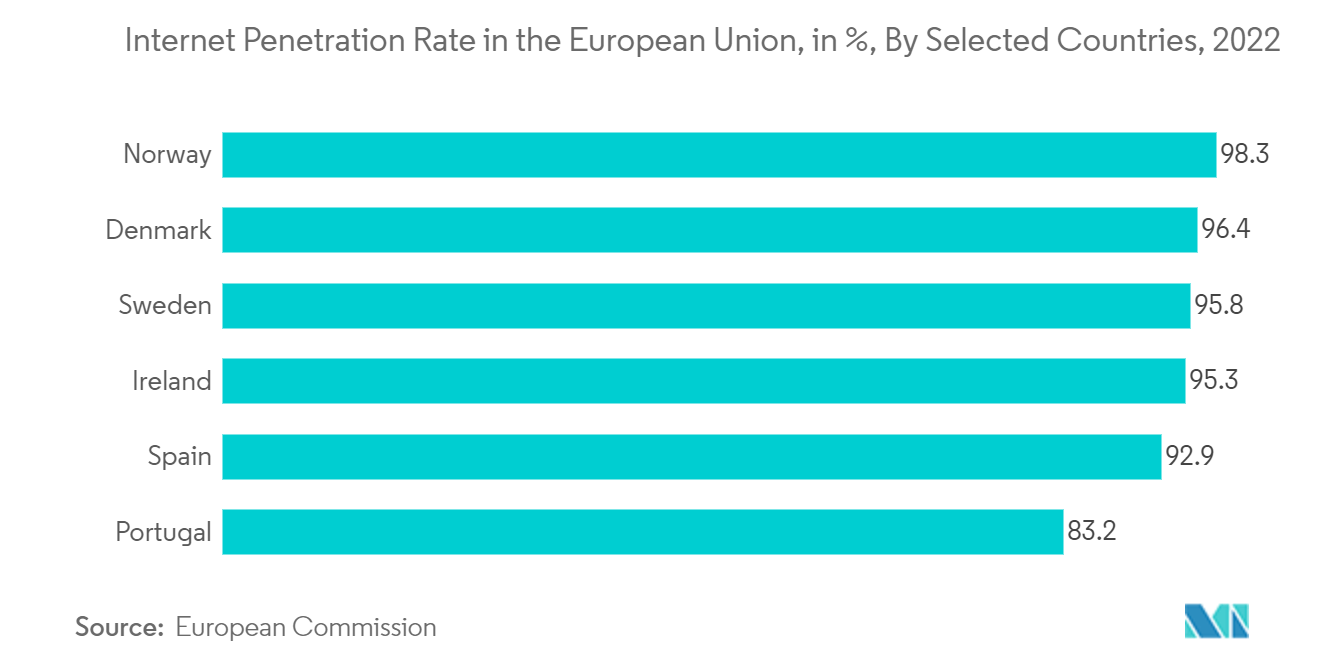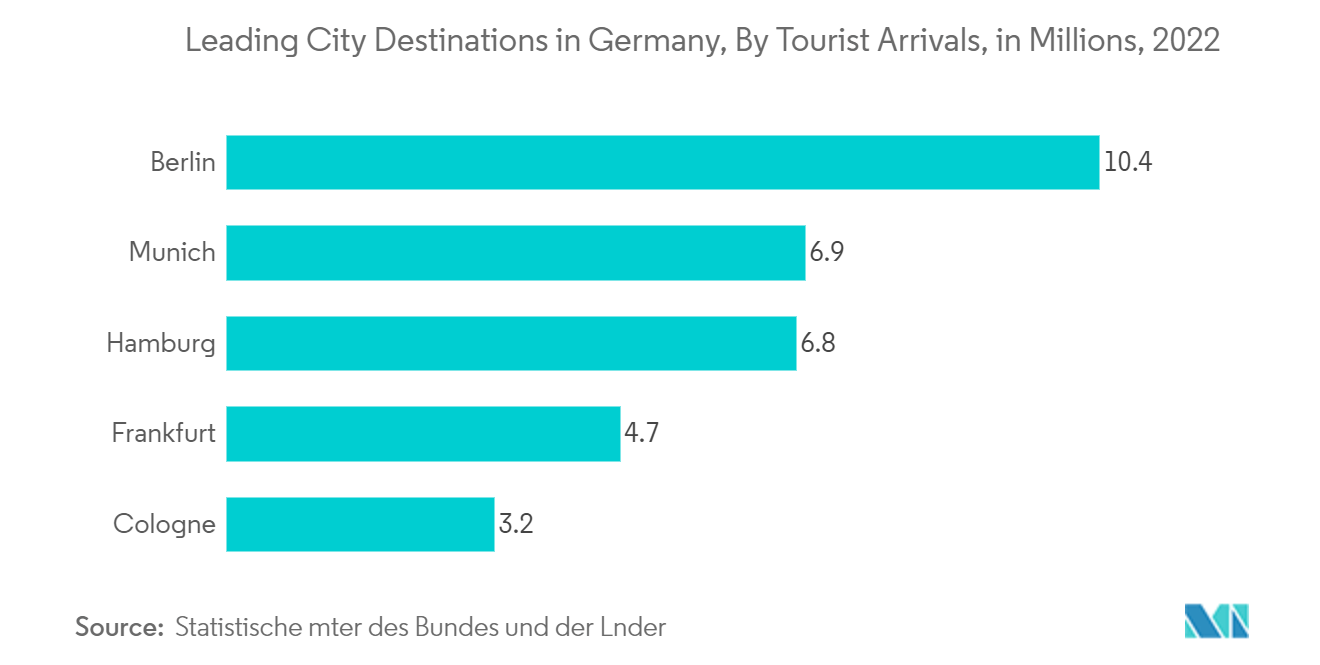Market Trends of Europe Vehicle Rental Industry
Online Segment of the Market to Gain Traction during the Forecast Period
The rising number of internet users and the increased convenience of availing online services for rental services serve as major determinants for the growth of the online segment of the market. Further, renting cars through online mediums is increasingly preferred by consumers as they can avoid the hassle of visiting physical locations and can compare prices, car make, and model from different platforms through browsing. Online mediums also assist in expanding the choice base of consumers before deciding.
• Northern and Western Europe boasted the highest internet penetration rate as of October 2023 worldwide. The internet penetration rate in Northern Europe touched 97.3%, followed by Western Europe, with an internet penetration of 93.7%. Southern Europe, on the other hand, recorded an internet penetration of 88.7% during the same period.
• In 2022, Norway and Denmark were ranked as the EU states with the highest share of the population using the internet on the Digital Economy and Society Index (DESI) by the European Commission. Both countries had an online usage penetration rate of more than 96% in 2022. In the same period, the average internet penetration in the European Union stood at around 89%.
Moreover, the growing tourism industry across Europe is also contributing to the demand for car rental services since international tourists can use online mediums to pre-book their desired vehicles. Therefore, with strategic government investment to develop and improve the tourism industry of the region, the online segment is expected to generate massive demand for renting cars over the forecast period.
• According to the United Nations’ World Tourism Organization (WTO), Spain, the United Kingdom, France, and Italy were the leading countries in Europe in terms of tourism receipts in 2022. Spain had the highest international tourism receipts in 2022, amounting to USD 72.9 billion, followed by the United Kingdom, with receipts touching USD 67.6 billion, and France, with international tourism receipts touching USD 59.7 billion.
Online players operating in the ecosystem are actively engaging to improve their user interface and are offering various value-added services, such as insurance coverage, to enhance customers' convenience and gain a competitive edge in the industry. With the rising smartphone and internet penetration rates across Europe and consumers’ preferences shifting toward low-cost private transportation for leisure purposes, the online segment of the market is expected to register surging growth over the coming years.

Germany to Dominate the Market during the Forecast Period
Consumers’ increasing preference toward availing private mediums of transportation for traveling purposes owing to the rising need for convenience in personal mobility, high internet penetration rate, and the growing number of tourists in Germany serve as major drivers for the growth of the car rental market in the country.
Due to the integration of several car rental platforms in the country, tourists have a wide range of options when choosing a platform that will offer a competitive price. Further, car rental services are becoming increasingly popular among tourists as they can choose the specific period they want to rent the car for rather than constantly being required to avail themselves of taxi services for transportation purposes.
• According to the Statistische Ämter des Bundes und der Länder, Berlin, Hamburg, Munich, Frankfurt, and Cologne were the leading popular destinations for tourists in Germany. In 2022, Berlin attracted nearly 10.4 million tourists, followed by Munich, which attracted 6.9 million tourists, and Hamburg with 6.8 million tourists during the same period.
• Moreover, according to the World Travel and Tourism Council, the travel and tourism industry contributed EUR 338.7 billion (USD 370.7 billion) to Germany's GDP in 2022, compared to EUR 374.4 billion (USD 409.8 billion) in 2021.
In line with the increasing focus of the government on promoting the electrification of vehicle fleets, various new entrants in the market are investing hefty sums to launch electric car rental services in the country. For instance,
• In October 2022, Sixt SE, a German car rental company, entered a long-term agreement with BYD Co. Ltd to buy 1,00,000 electric vehicles by 2028. These electric vehicles will be used to offer rental services worldwide, including across European countries, marking the company's significant shift toward electrifying its fleet between 70 and 90% by 2030.
Moreover, in recent years, the vacancy rate of office spaces across Germany has been declining, showcasing a strong sentiment of business professionals to resume work from office setups, thereby contributing to the massive demand for car rental services, as the corporate industry serves as a major end-user for this industry. In Karlsruhe City, the office real estate vacancy rate was only 1.7% in 2022 compared to 3.7% in 2021. With the expanding corporate industry and increasing preference of rental companies to integrate electric vehicles in their car rental fleet, car rental services in Germany are expected to register massive demand during the forecast period.


